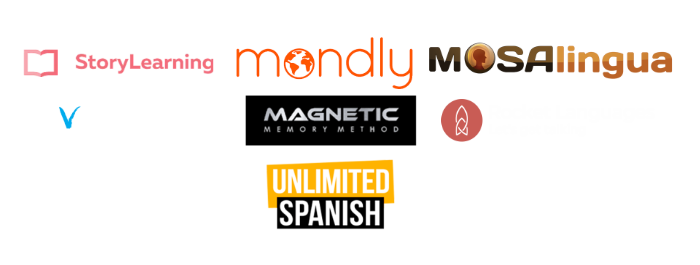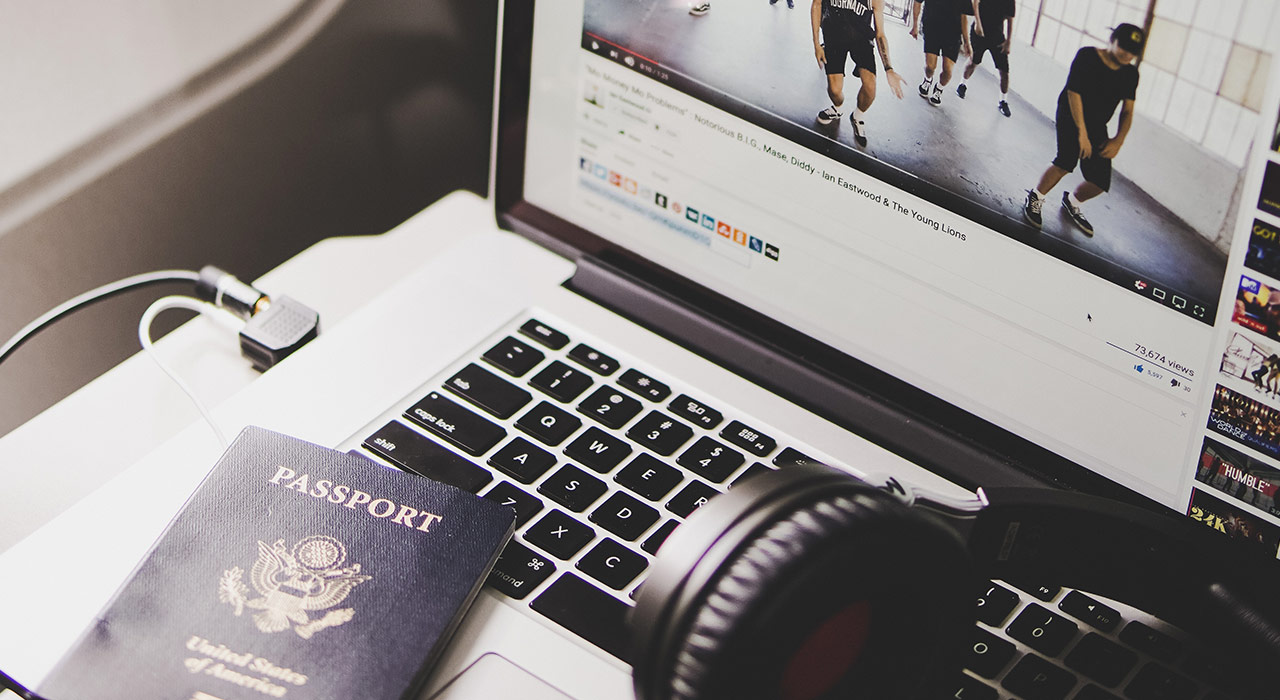How to Use Short Videos to Power-Up Your Language Learning

Videos and movies are really powerful tools to power-up your language learning. Now, the question is:
Do you use these resources correctly?
You see, I am a native Spanish speaker, and when I was learning to speak English, I went through a journey of trying different courses and methods, only to leave me thinking that English was too difficult.
However, ever since I can remember, I’ve always been interested in languages. My eyes well-up with tears every time I remember my dad telling me that he was taking English lessons when I was seven. I was so curious about my dad’s new skills that I was always like: “¿Cómo se dice [anything] en inglés?” (how do you say [anything] in English?).
From that point of my life, I fell in love with foreign languages, and because of that, my parents signed me up for several English courses.
I Struggled with English… Until I Found Short Videos
My dream was to speak English fluently and sound like people from the movies (yep, that was the wish of a seven-year-old boy influenced by Hollywood).
Anyhow, during my English lessons, I spent a lot of time analyzing grammar rules and learning textbook English, and that was far from my dream.
Every time I had to face a real conversation, I just couldn't understand the other person clearly.
How did I solve this problem? Later in life when I was older, one of the things that helped me improve my new language and to understand native speakers was learning real English. And I did this by using the media, more specifically: short videos. As soon as I started watching short videos in English, my listening skills improved dramatically.
In this blog post, I’ll be sharing with you the method that I personally follow to use short videos and power-up my language learning.
It doesn’t matter if the video is in English, Spanish, Portuguese, French, Italian, or any other language. This technique I’m about to share that will give you real results if you follow the instructions.
“What Kind of Videos Should I Watch?”
Perhaps the question above is the first thing that popped into your head after reading the first paragraphs of this article.
Well, notice that I am not asking you to use a complete movie or just any kind of video, I am talking to you about short videos.
The benefits of using videos with a technique that I’ll describe later are countless, among other things, in videos you can find:
- Real spoken language;
- Native speakers using idioms and natural expressions;
- No grammatical explanations or boring academic language;
- Real communication among people;
- More time exposed to the language;
- The natural rhythms of your target language.
Why You Must Choose Short Videos
Why do I prefer short videos? Simple: a short video is easier to analyze and to watch from beginning to end compared to a movie or a longer video.
Now, not all kinds of short videos will give you the benefits that I outlined above. You must look for useful material, and that means, videos with your target language spoken naturally and by native speakers.
It is not the same to watch a video of someone teaching you to pronounce some Spanish words at a slow pace. The best videos are those that tell stories or give information at a natural and conversational speed.
The 4 Rules for Choosing a Video
The type of videos that I am talking about must meet the following requirements:
- The video must be interesting or fun to you.
- It must have subtitles, at least, in the language of the video.
- The video must be spoken by a native speaker of your target language.
- It must be short (No more than 10 minutes).
One of the best platforms to look for short videos is of course, YouTube, and in the past, Benny has given recommendations on how to use YouTube as a tool for language learning.
You can also look up for some short YouTube videos in your target language that contain the following content:
- Short clips or parts of TV shows or movies;
- Language vlogs;
- Reviews of movies or products;
- ‘How to’ videos;
- Short interviews.
My 3-Step “Video Power-Up” Technique to Learn a Language Using Short Videos
Alright, now you know the benefits of using short videos, and the kind of videos that you should look for, I’d like to share my video “power-up” technique.
I’m going to show you how you can use the videos you’ve found for improving your new language — so you can take off like spaceship launching into light speed.
Before you follow my three-step process, outlined below, you must get into a positive mindset. Trust in your brain’s natural skills to learn languages and know that as long as you expose yourself regularly to understandable material in your target language, you will make huge progress and eventually become fluent. Think of yourself not as a student, but as a native speaker of your target language that is just learning to speak.
Let’s get started!
Phase 1: Understanding
The most important thing is that you understand the complete video, so go slowly through the video.
A good idea is to spend just 10 – 15 minutes every day studying the video, and remember it must be a short video, so it should only take you a little time.
Start with easy to understand short videos like science for kids or small sections of TV shows for children. As you get comfortable watching videos and listening to the native language, increase the difficulty and go for different kinds of videos.
Something really useful is to divide the video into shorter segments and focus just on small parts of the video.
Are you watching a 5-minute video? Then divide it into two parts of 2.5 minutes each, and then go deeply through the segment:
- Turn on the subtitles in the same language as the video is spoken.
- Watch the first segment and look for words and expressions that you don’t understand.
- Look up the meaning of those words, so the video becomes completely clear for you.
Remember I said, “10 – 15 minutes studying the video”? Well, the goal of phase one is to learn the vocabulary of the video deeply, so focus on repeating the first segment of the video for a couple of days.
As you feel that you are identifying how the words you read in the subtitles match with the voices of the video, turn off the subtitles and keep repeating that segment for three or four days more for 10 – 15 minutes every day.
Make sure you can understand the first segment of the short-video and then move on to the next phase: Speaking.
Phase 2: Speaking
If you did everything right in the previous phase, it means that you can understand the video easily.
Now, the next step is to play sentence by sentence the first segment of the video, and as you hear every sentence, pause the video and repeat the words you hear aloud.
Try to do exactly everything you hear and see, don’t just repeat mindlessly, copy everything:
- Emotions
- If there’s an actor, copy the body language
- Intonation
- Energy
Do this for a couple of more days and try to increase the level of difficulty by turning off the subtitles and just repeating the sentences without reading anything.
After three or four days of practice, you should be able to say what the video says without pausing the video.
Try to forget that you are doing this to learn a language, and have fun with it, exaggerate the gestures or shout out the words.
Every time I do this kind of exercise I remember my classmates back in high school, some of them used to make fun of some teachers mimicking them, they were so good that even other teachers laughed at the interpretation of their colleagues.
Phase 3: Correction
Some people think that the only way to correct their mistakes when learning a second language is with the help of someone else who points out some corrections.
Well, with short videos, you can do this on your own, and again, because these videos are short, it won’t take too much of your time.
You can correct yourself by recording your voice on your phone saying everything the video says and after that just compare the video to your recording.
Notice how different your speaking may sound to what the video really sounds and make adjustments in your pronunciation, paying attention to aspects like the emotions, intonation, etc…
Is this the end of using a short video to improve your new language? No, remember that I told you to divide the video into segments, so when you complete phase three just go to the next segment of the video and start over from phase one.
Here’s a short video where I explain this 3-step process:
Will Short Videos Make You Fluent in a Language
I can’t tell you that you will master Spanish or Japanese by simply using short videos. However, they can be such a great tool!
I have learned lots of phrases through videos, like when I learned the phrase: “It’s up to you”, I was looking for a way to connect my PlayStation to an old computer monitor and the guy from the video showed two different connectors saying something like: “you can use either one of these two, it’s up to you”.
I looked for the meaning of this new expression and then repeated the video many times. In the end, I connected my PlayStation to that old monitor, but most importantly I learned a new phrase that I’ve used countless times now.
That is just one of the many experiences that I’ve had using short videos to power up my language learning. I really hope that after reading this blog post, implementing this technique becomes a new tool to help you achieve fluency in any language you want to learn.







Social